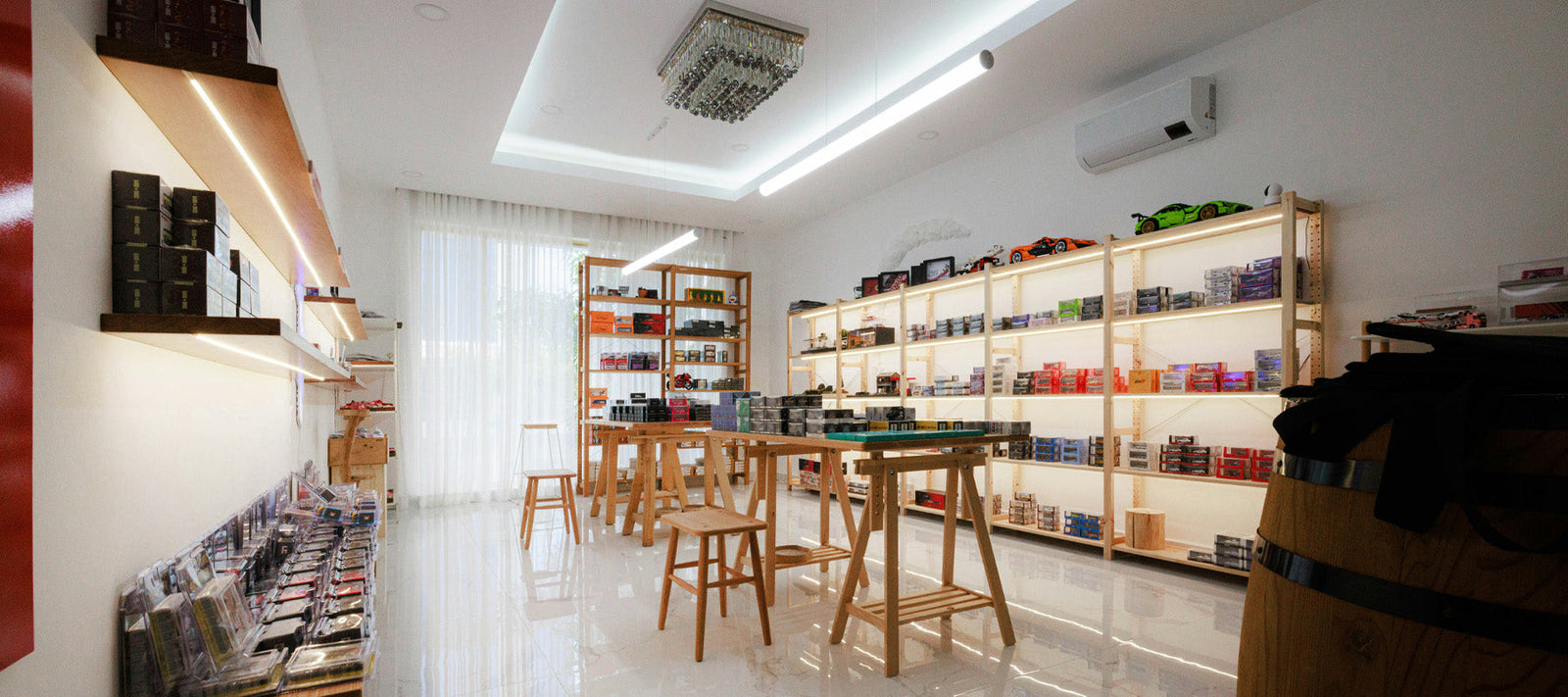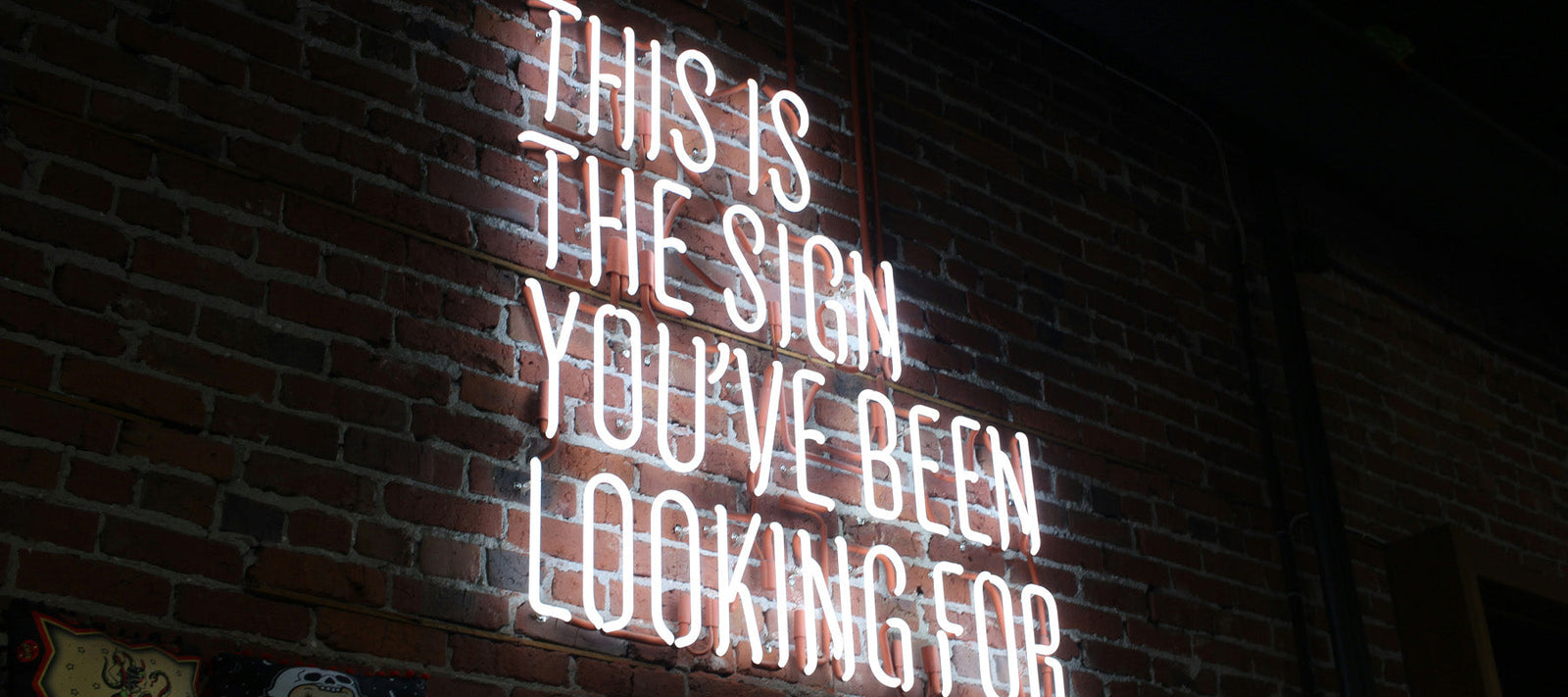In the rapidly evolving retail landscape, Point of Sale (POS) displays have become a critical touchpoint for engaging customers and enhancing their shopping experience. One of the most innovative trends in this space is the integration of user-generated content (UGC) into POS displays. UGC refers to any form of content—text, videos, images, reviews—created by consumers rather than brands. Incorporating UGC into retail displays can create a more authentic, relatable, and engaging shopping environment. This article explores the benefits, strategies, and examples of effective UGC integration in retail POS displays.
The Rise of User-Generated Content
User-generated content has become a powerful tool in modern marketing, driven by the proliferation of social media platforms and the increasing trust consumers place in peer recommendations over traditional advertising. According to studies, consumers are 2.4 times more likely to view UGC as authentic compared to brand-created content. This trust translates into higher engagement rates and increased sales. Retailers are now leveraging this power by incorporating UGC into their POS displays to create a more interactive and engaging shopping experience.
Benefits of Integrating UGC in POS Displays
1. Enhanced Trust and Authenticity: UGC adds a layer of authenticity to marketing messages. When potential customers see real people using and endorsing products, it builds trust and credibility. This can be particularly effective in retail environments where consumers are making on-the-spot purchasing decisions.
2. Increased Engagement: UGC can make POS displays more interactive and engaging. By showcasing content created by fellow consumers, retailers can capture shoppers' attention more effectively than traditional static displays.
3. Social Proof: Displaying customer reviews, testimonials, and social media posts acts as social proof, reassuring potential buyers about the quality and popularity of a product. This can significantly influence purchasing decisions, especially for high-consideration items.
4. Personalisation: UGC allows for a more personalised shopping experience. Retailers can display content that resonates with their target audience, whether it's showcasing local influencers, featuring diverse customer stories, or highlighting seasonal trends.
5. Cost-Effective Marketing: Leveraging UGC is often more cost-effective than creating new marketing content from scratch. It allows brands to continuously update their displays with fresh, relevant content without the need for expensive photo shoots or video productions.
Strategies for Incorporating UGC in POS Displays
1. Social Media Integration: One of the most common methods is to integrate live social media feeds into POS displays. This can include Instagram posts, Twitter mentions, and Facebook reviews. Tools like social media walls or live feeds can pull in real-time content, keeping displays dynamic and current.
2. Customer Reviews and Ratings: Displaying customer reviews and ratings on digital screens at the POS can help reassure shoppers. Retailers can highlight top-rated products, feature recent reviews, and even use QR codes to allow customers to read more detailed feedback on their mobile devices.
3. Photo and Video Displays: Incorporating customer photos and videos can make displays more visually appealing and relatable. Retailers can encourage customers to share their photos using a specific hashtag, which can then be moderated and displayed in-store.
4. Interactive Displays: Touchscreen kiosks or interactive displays can allow customers to browse UGC themselves. For example, a clothing store might let shoppers swipe through customer photos to see how different outfits look on real people.
5. Influencer Content: Partnering with influencers and showcasing their content at the POS can leverage their reach and credibility. Retailers can display influencer reviews, tutorials, and unboxing videos, creating a bridge between online influence and offline shopping.
6. Gamification and Contests: Engaging customers through contests or gamified experiences that encourage them to create and share content can drive participation. For example, a retailer might run a photo contest with winners featured on in-store displays.
Examples of Effective UGC Integration in POS Displays
1. Sephora: Sephora has been a leader in integrating UGC into its retail experience. The beauty retailer’s digital POS displays feature customer reviews, photos, and videos. Sephora's "Beauty Board" allows customers to upload photos of themselves using Sephora products, which are then displayed both online and in-store. This not only helps build community but also provides social proof for potential buyers.
2. Nike: Nike’s flagship stores use interactive screens to showcase customer-generated content. Shoppers can see how other customers wear and use Nike products through photos and videos shared on social media. Nike also uses UGC to highlight local running routes and training tips, creating a more localized and personalized shopping experience.
3. Apple: Apple stores incorporate UGC in their POS displays by showcasing customer photos taken with iPhones. This strategy not only highlights the quality of their camera technology but also builds a sense of community among Apple users. The displays often feature diverse and creative user content, emphasising the versatility and global appeal of Apple products.
4. Urban Outfitters: Urban Outfitters uses UGC to create a vibrant and engaging store environment. Their in-store screens display a mix of customer photos, social media posts, and reviews. By encouraging shoppers to share their Urban Outfitters looks on Instagram, the brand fosters a sense of community and keeps its displays fresh and relevant.
5. Lululemon: Lululemon integrates UGC into its POS displays by featuring customer photos and videos from social media. These displays often highlight real customers participating in athletic activities, showcasing the functionality and style of Lululemon products. This approach helps inspire potential buyers and provides authentic testimonials of the brand’s quality.
Implementing UGC in POS Displays: Best Practices
1. Moderation and Curation: Ensure that all displayed content is moderated and curated to maintain brand integrity and appropriateness. Tools like content moderation platforms can help automate this process, ensuring that only high-quality and relevant content is showcased.
2. Encourage Participation: Actively encourage customers to create and share content. Use in-store signage, social media campaigns, and incentives like discounts or contests to motivate customers to participate.
3. Highlight Diversity: Showcase a diverse range of customers to appeal to a broader audience. Highlighting different body types, ethnicities, and age groups can make your displays more inclusive and relatable.
4. Keep Content Fresh: Regularly update the displayed content to keep it current and engaging. Stale or outdated content can quickly lose its impact, so ensure a steady stream of new UGC is integrated into your displays.
5. Leverage Analytics: Use analytics to understand which types of UGC resonate most with your audience. This data can help you refine your strategy and focus on the content that drives the most engagement and sales.
6. Integrate Seamlessly: Ensure that the UGC integration feels natural and seamless within the overall store design. The displays should complement the shopping experience without overwhelming or distracting from the products.
The Future of UGC in Retail POS Displays
As technology continues to advance, the possibilities for integrating UGC into retail POS displays will only expand. Here are a few trends to watch for in the coming years:
1. Augmented Reality (AR) and Virtual Reality (VR): AR and VR technologies will allow for even more immersive and interactive UGC experiences. Imagine trying on clothes virtually using a mirror that displays user-generated content of how others have styled the same pieces.
2. Artificial Intelligence (AI): AI can help personalise the UGC displayed to individual shoppers based on their preferences and behaviour. For example, digital displays could show content from users with similar tastes or lifestyles, enhancing the relevance and impact.
3. Blockchain for Authenticity: Blockchain technology can be used to verify the authenticity of UGC, ensuring that reviews and testimonials are genuine. This can help further build trust and credibility with customers.
4. Integrated E-commerce: Future POS displays may integrate more seamlessly with e-commerce platforms, allowing customers to make purchases directly from the UGC they see in-store. This could bridge the gap between online and offline shopping experiences.
5. Voice-Activated Displays: Voice technology could allow customers to interact with POS displays using voice commands, making it easier to browse and engage with UGC.
Retail POS displays that incorporate user-generated content represent a powerful convergence of technology, marketing, and consumer behaviour. By leveraging the authenticity, trust, and engagement that UGC offers, retailers can create more dynamic and compelling shopping experiences. As we move further into 2024 and beyond, the integration of UGC into retail environments will continue to evolve, driven by advancements in technology and an ever-increasing focus on personalisation and customer engagement.
Retailers who embrace this trend and implement it effectively will be well-positioned to connect with their customers on a deeper level, drive sales, and build lasting brand loyalty. Whether through interactive social media feeds, customer reviews, or immersive AR experiences, the possibilities for UGC in retail POS displays are vast and exciting.
The Rise of User-Generated Content
User-generated content has become a powerful tool in modern marketing, driven by the proliferation of social media platforms and the increasing trust consumers place in peer recommendations over traditional advertising. According to studies, consumers are 2.4 times more likely to view UGC as authentic compared to brand-created content. This trust translates into higher engagement rates and increased sales. Retailers are now leveraging this power by incorporating UGC into their POS displays to create a more interactive and engaging shopping experience.
Benefits of Integrating UGC in POS Displays
1. Enhanced Trust and Authenticity: UGC adds a layer of authenticity to marketing messages. When potential customers see real people using and endorsing products, it builds trust and credibility. This can be particularly effective in retail environments where consumers are making on-the-spot purchasing decisions.
2. Increased Engagement: UGC can make POS displays more interactive and engaging. By showcasing content created by fellow consumers, retailers can capture shoppers' attention more effectively than traditional static displays.
3. Social Proof: Displaying customer reviews, testimonials, and social media posts acts as social proof, reassuring potential buyers about the quality and popularity of a product. This can significantly influence purchasing decisions, especially for high-consideration items.
4. Personalisation: UGC allows for a more personalised shopping experience. Retailers can display content that resonates with their target audience, whether it's showcasing local influencers, featuring diverse customer stories, or highlighting seasonal trends.
5. Cost-Effective Marketing: Leveraging UGC is often more cost-effective than creating new marketing content from scratch. It allows brands to continuously update their displays with fresh, relevant content without the need for expensive photo shoots or video productions.
Strategies for Incorporating UGC in POS Displays
1. Social Media Integration: One of the most common methods is to integrate live social media feeds into POS displays. This can include Instagram posts, Twitter mentions, and Facebook reviews. Tools like social media walls or live feeds can pull in real-time content, keeping displays dynamic and current.
2. Customer Reviews and Ratings: Displaying customer reviews and ratings on digital screens at the POS can help reassure shoppers. Retailers can highlight top-rated products, feature recent reviews, and even use QR codes to allow customers to read more detailed feedback on their mobile devices.
3. Photo and Video Displays: Incorporating customer photos and videos can make displays more visually appealing and relatable. Retailers can encourage customers to share their photos using a specific hashtag, which can then be moderated and displayed in-store.
4. Interactive Displays: Touchscreen kiosks or interactive displays can allow customers to browse UGC themselves. For example, a clothing store might let shoppers swipe through customer photos to see how different outfits look on real people.
5. Influencer Content: Partnering with influencers and showcasing their content at the POS can leverage their reach and credibility. Retailers can display influencer reviews, tutorials, and unboxing videos, creating a bridge between online influence and offline shopping.
6. Gamification and Contests: Engaging customers through contests or gamified experiences that encourage them to create and share content can drive participation. For example, a retailer might run a photo contest with winners featured on in-store displays.
Examples of Effective UGC Integration in POS Displays
1. Sephora: Sephora has been a leader in integrating UGC into its retail experience. The beauty retailer’s digital POS displays feature customer reviews, photos, and videos. Sephora's "Beauty Board" allows customers to upload photos of themselves using Sephora products, which are then displayed both online and in-store. This not only helps build community but also provides social proof for potential buyers.
2. Nike: Nike’s flagship stores use interactive screens to showcase customer-generated content. Shoppers can see how other customers wear and use Nike products through photos and videos shared on social media. Nike also uses UGC to highlight local running routes and training tips, creating a more localized and personalized shopping experience.
3. Apple: Apple stores incorporate UGC in their POS displays by showcasing customer photos taken with iPhones. This strategy not only highlights the quality of their camera technology but also builds a sense of community among Apple users. The displays often feature diverse and creative user content, emphasising the versatility and global appeal of Apple products.
4. Urban Outfitters: Urban Outfitters uses UGC to create a vibrant and engaging store environment. Their in-store screens display a mix of customer photos, social media posts, and reviews. By encouraging shoppers to share their Urban Outfitters looks on Instagram, the brand fosters a sense of community and keeps its displays fresh and relevant.
5. Lululemon: Lululemon integrates UGC into its POS displays by featuring customer photos and videos from social media. These displays often highlight real customers participating in athletic activities, showcasing the functionality and style of Lululemon products. This approach helps inspire potential buyers and provides authentic testimonials of the brand’s quality.
Implementing UGC in POS Displays: Best Practices
1. Moderation and Curation: Ensure that all displayed content is moderated and curated to maintain brand integrity and appropriateness. Tools like content moderation platforms can help automate this process, ensuring that only high-quality and relevant content is showcased.
2. Encourage Participation: Actively encourage customers to create and share content. Use in-store signage, social media campaigns, and incentives like discounts or contests to motivate customers to participate.
3. Highlight Diversity: Showcase a diverse range of customers to appeal to a broader audience. Highlighting different body types, ethnicities, and age groups can make your displays more inclusive and relatable.
4. Keep Content Fresh: Regularly update the displayed content to keep it current and engaging. Stale or outdated content can quickly lose its impact, so ensure a steady stream of new UGC is integrated into your displays.
5. Leverage Analytics: Use analytics to understand which types of UGC resonate most with your audience. This data can help you refine your strategy and focus on the content that drives the most engagement and sales.
6. Integrate Seamlessly: Ensure that the UGC integration feels natural and seamless within the overall store design. The displays should complement the shopping experience without overwhelming or distracting from the products.
The Future of UGC in Retail POS Displays
As technology continues to advance, the possibilities for integrating UGC into retail POS displays will only expand. Here are a few trends to watch for in the coming years:
1. Augmented Reality (AR) and Virtual Reality (VR): AR and VR technologies will allow for even more immersive and interactive UGC experiences. Imagine trying on clothes virtually using a mirror that displays user-generated content of how others have styled the same pieces.
2. Artificial Intelligence (AI): AI can help personalise the UGC displayed to individual shoppers based on their preferences and behaviour. For example, digital displays could show content from users with similar tastes or lifestyles, enhancing the relevance and impact.
3. Blockchain for Authenticity: Blockchain technology can be used to verify the authenticity of UGC, ensuring that reviews and testimonials are genuine. This can help further build trust and credibility with customers.
4. Integrated E-commerce: Future POS displays may integrate more seamlessly with e-commerce platforms, allowing customers to make purchases directly from the UGC they see in-store. This could bridge the gap between online and offline shopping experiences.
5. Voice-Activated Displays: Voice technology could allow customers to interact with POS displays using voice commands, making it easier to browse and engage with UGC.
Retail POS displays that incorporate user-generated content represent a powerful convergence of technology, marketing, and consumer behaviour. By leveraging the authenticity, trust, and engagement that UGC offers, retailers can create more dynamic and compelling shopping experiences. As we move further into 2024 and beyond, the integration of UGC into retail environments will continue to evolve, driven by advancements in technology and an ever-increasing focus on personalisation and customer engagement.
Retailers who embrace this trend and implement it effectively will be well-positioned to connect with their customers on a deeper level, drive sales, and build lasting brand loyalty. Whether through interactive social media feeds, customer reviews, or immersive AR experiences, the possibilities for UGC in retail POS displays are vast and exciting.






